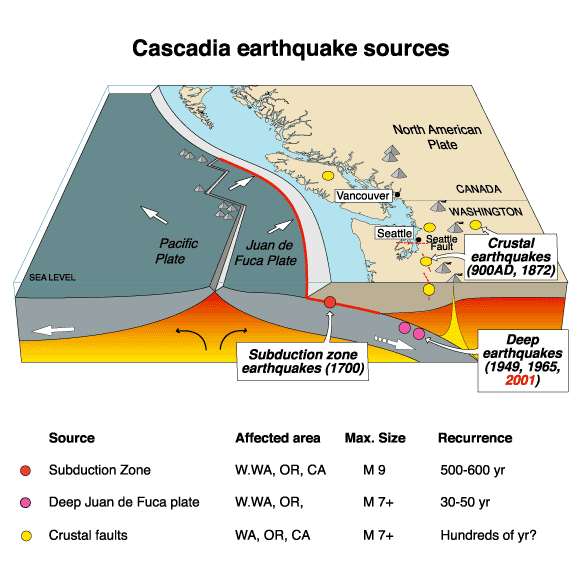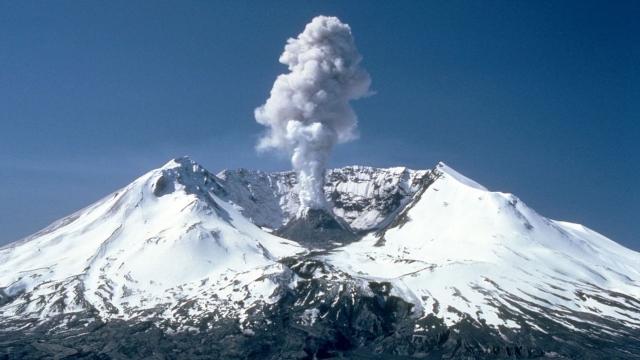Picture a volcanic eruption: Fiery magma and smoke billowing skyward as a towering mountain empties its over-pressurised belly of a hot meal. At least, that’s how most of us think it works. So you can imagine volcanologists’ surprise when they discovered that Mount St Helens, which was responsible for the deadliest eruption in US history, is actually cold inside.
A plume of steam and ash billowing out of Mount St Helens in 1982, two years after the most destructive eruption in US history. Image: Wikimedia
Apparently, it’s stealing its fire from somewhere else.
Mount St Helens is one of the most active volcanoes of the Cascade Arc, a string of eruptive mountains that runs parallel to the Cascadia subduction zone from northern California to British Columbia. It’s also one of the strangest. Most major volcanoes of the Cascade Arc sit neatly along a north-south line, where the wedging of the Juan de Fuca tectonic plate beneath the North American plate forces hot mantle material to rise. Mount St Helens, however, lies to the west, in a geologically quiescent region called the forearc wedge.
“We don’t have a good explanation for why that’s the case,” said Steve Hansen, a geoscientist at the University of New Mexico in Albuquerque.

Image: US Geological Survey
Seeking answers, Hansen recently led a seismic mapping survey of Mount St Helens. In the winter of 2014, his team deployed thousands of sensors to measure motion in the ground around the volcano. Then, they drilled nearly two dozen holes, packed the holes full of explosives, triggered a handful of minor quakes and watched as seismic waves bounced around beneath the mountain. “We’re looking at what seismic energy propagates off in the subsurface,” Hansen explained. “It’s a bit like a CAT scan.”
Their analysis, which is published today in Nature Communications, appears to have created more questions than it answered. From seismic reflections, Hansen and his colleagues learned that the types of minerals present at the boundary between Earth’s crust and mantle are markedly different to the east and west of Mount St Helens, confirming that this area is geologically special. But instead of finding a hot magma chamber directly beneath the volcano, seismic data indicates a relatively cool wedge of serpentine rock.
Not only is Mount St Helens out of place, but it also lacks the magma reserves we’d expect given its violent history. So, where on Earth is Mount St Helens getting its fuel?
Hansen suspects the volcano’s magma source lies to the east, closer to the rest of the Cascade Arc, where material in the upper mantle is hotter. But that still leaves the question of why gooey rock being forced westward, through the crust or upper mantle, to erupt in this one off-kilter location. Earthquakes in the deep crust may be partially responsible, but more data is needed to confirm such a link.
Fortunately, more data is exactly what Hansen, and other scientists associated with the Imaging Magma Under St Helens (iMUSH) project, are now collecting. What geologists learn about this weird volcano – how its magmas form, how they moved around, when and why they erupt — could improve our understanding of volcanic arc systems around the world.
“Mount St Helens is pretty unusual,” Hansen said. “It’s telling us something about how the arc system is behaving, and we don’t yet know what that something is.”
